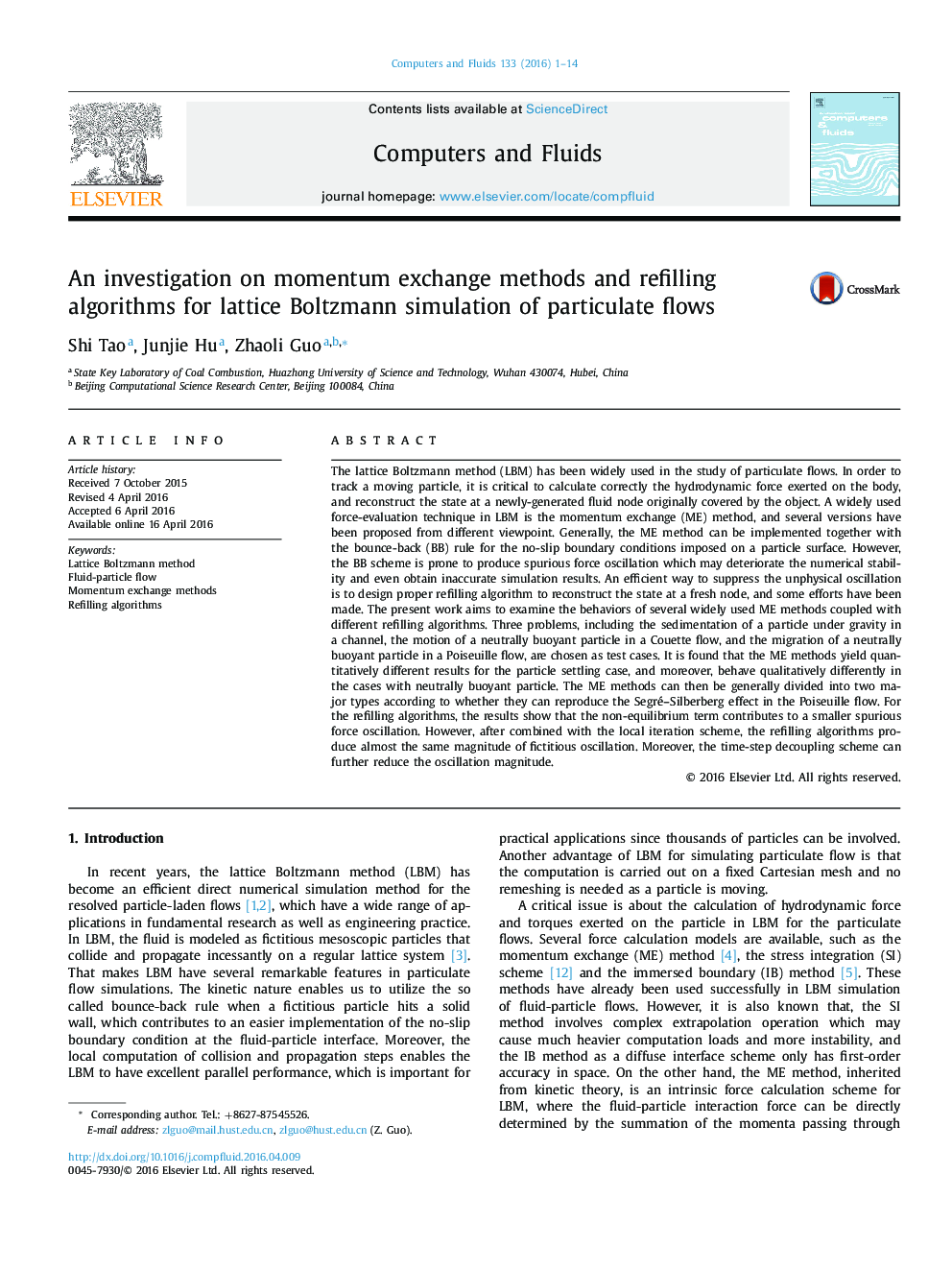| کد مقاله | کد نشریه | سال انتشار | مقاله انگلیسی | نسخه تمام متن |
|---|---|---|---|---|
| 7156707 | 1462677 | 2016 | 14 صفحه PDF | دانلود رایگان |
عنوان انگلیسی مقاله ISI
An investigation on momentum exchange methods and refilling algorithms for lattice Boltzmann simulation of particulate flows
ترجمه فارسی عنوان
تحقیق در مورد روش های مبادله حرکت و الگوریتم های تکمیل برای شبیه سازی شبکه جریان های ذرات بولتزمن
دانلود مقاله + سفارش ترجمه
دانلود مقاله ISI انگلیسی
رایگان برای ایرانیان
کلمات کلیدی
موضوعات مرتبط
مهندسی و علوم پایه
سایر رشته های مهندسی
مکانیک محاسباتی
چکیده انگلیسی
The lattice Boltzmann method (LBM) has been widely used in the study of particulate flows. In order to track a moving particle, it is critical to calculate correctly the hydrodynamic force exerted on the body, and reconstruct the state at a newly-generated fluid node originally covered by the object. A widely used force-evaluation technique in LBM is the momentum exchange (ME) method, and several versions have been proposed from different viewpoint. Generally, the ME method can be implemented together with the bounce-back (BB) rule for the no-slip boundary conditions imposed on a particle surface. However, the BB scheme is prone to produce spurious force oscillation which may deteriorate the numerical stability and even obtain inaccurate simulation results. An efficient way to suppress the unphysical oscillation is to design proper refilling algorithm to reconstruct the state at a fresh node, and some efforts have been made. The present work aims to examine the behaviors of several widely used ME methods coupled with different refilling algorithms. Three problems, including the sedimentation of a particle under gravity in a channel, the motion of a neutrally buoyant particle in a Couette flow, and the migration of a neutrally buoyant particle in a Poiseuille flow, are chosen as test cases. It is found that the ME methods yield quantitatively different results for the particle settling case, and moreover, behave qualitatively differently in the cases with neutrally buoyant particle. The ME methods can then be generally divided into two major types according to whether they can reproduce the Segré-Silberberg effect in the Poiseuille flow. For the refilling algorithms, the results show that the non-equilibrium term contributes to a smaller spurious force oscillation. However, after combined with the local iteration scheme, the refilling algorithms produce almost the same magnitude of fictitious oscillation. Moreover, the time-step decoupling scheme can further reduce the oscillation magnitude.
ناشر
Database: Elsevier - ScienceDirect (ساینس دایرکت)
Journal: Computers & Fluids - Volume 133, 15 July 2016, Pages 1-14
Journal: Computers & Fluids - Volume 133, 15 July 2016, Pages 1-14
نویسندگان
Shi Tao, Junjie Hu, Zhaoli Guo,
